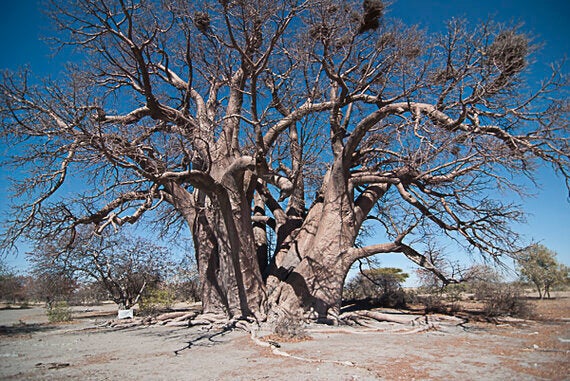
Giant Baobab, photograph: Heike Pander
Even the largest giant tree starts from a little seed: it is about one centimeter long, reddish brown and comes with a very hard shell. It may take up to 1000 years and more until a tiny sprout develops into a giant to show its bewildering form throughout the savannahs of Africa. Their start in life seems to be a difficult one. Therefore, Dr. Sarah Venter, baobab ecologist initiated a foundation which gives the giants a jump start.
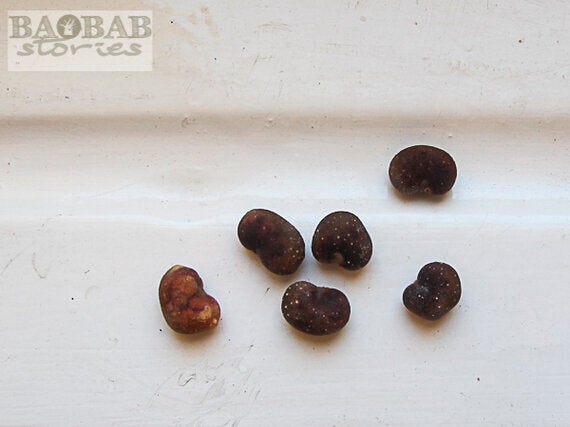
Baobab Seeds
The route to light via digestive juices
The first hurdle on the long journey to become an African icon is the hard seed coat. Nature draws on a few tricks: The seed coat soaks long enough in water during the rainy season and softens up. Sometimes bushfires help to crack the shell.
The fruit of the baobab are tasty and therefore often eaten by elephants or monkeys. The seeds move through their digestive tract and soak in digestive juices which make the shell permeable.
A breakthrough of the seedling is no guarantee for survival. During their first months in life the little trees require optimal growth conditions until a strong taproot has formed: adequate and regular water, light, warmth and nutrients.
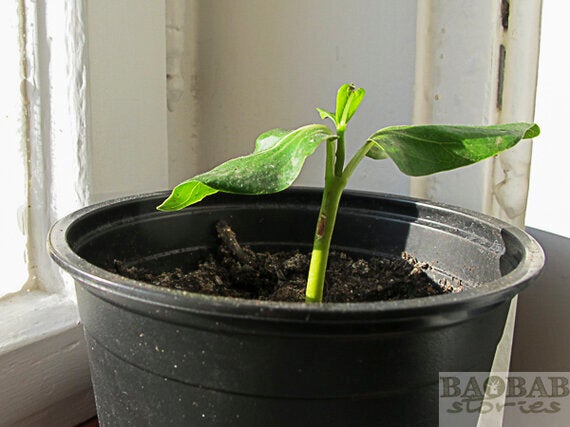
Baobab, two months old
Ideal conditions are rare
Until today, science cannot fully grasp how many years pass by until a Baobab seed meets the ideal germination and growth conditions which allow it to survive successfully. This form of reproduction is called episodic recruitment. It might well be that baobabs in certain regions propagate successfully only once every 100 to 150 years or even more.
Tender shoots lure livestock
But even ideal growing conditions are no guarantee. The tender shoots of the baobabs entice goats, sheep, cattle and antelope. Severe damage on the seedlings may cause them to die. Little baobabs do not have the appropriate resources to constantly produce new shoots like the grown up fellows. They stand a chance to make it only at a height of about three meters. In the wilderness, little trees rarely survive the first three years.
Hunger for farmland
Baobab populations and their descendants are not only threatened by livestock. Humans compete with the giants in terms of habitat. The hunger for land has no limits and ancient baobabs have to make room for cotton fields and maize.
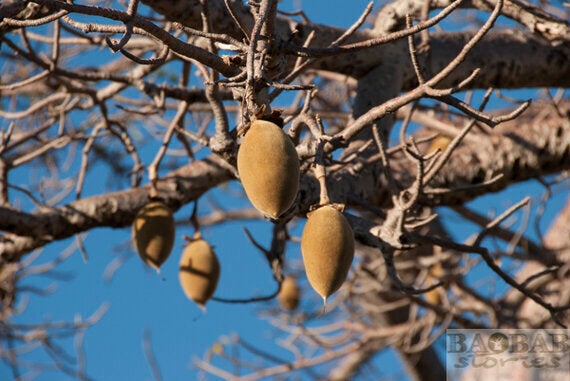
Baobab Fruit
In addition, using baobab fruit and seeds could develop into a problem. Traditionally, baobabs were used for food and as medicines. The tree was considered sacred in many places and therefore protected. Enough fruit and seeds remained in the natural environment for reproduction.
Recently, baobab powder and oil have gained importance on international markets. Their growing popularity as a "superfruit" is based on a multifold composition of healthy ingredients. Venter has discovered in her studies in the Venda region in South Africa that the current use of the fruit does not endanger the survival of the trees.
Whether this also applies to other regions with baobab occurrence, is not clear. Baobab fruit do not grow on plantations but are referred to as "wild collections". In those areas the user rights are not always regulated clearly. This may complicate the protection of the trees, if any user may claim "free access" to baobab as a resource.
Will sustainability lag behind?
Environmental degradation, direct human impact and climate change increasingly put the giants under pressure: What will happen once fruit powder and seed-oil gain more and more popularity internationally and sustainable collecting of fruit is neglected?
The impact thereof would not be felt immediately, because there are still enough reproductive Baobabs around. The problem manifests itself in a few hundred years, when we are no longer around and young baobabs could not grow to full size due to previous recruitment constraints.
In view of the situations described above Venter actively wanted to preserve baobabs and contribute to improving the lives of people who live with the trees. Therefore, she initiated the Baobab "Foundation" in 2013.
Baobab Guardians program
The foundation is based on two pillars - the first is called the "Baobab Guardians Program" with a focus on planting and care of Baobab trees. The second is a preschool program for children.
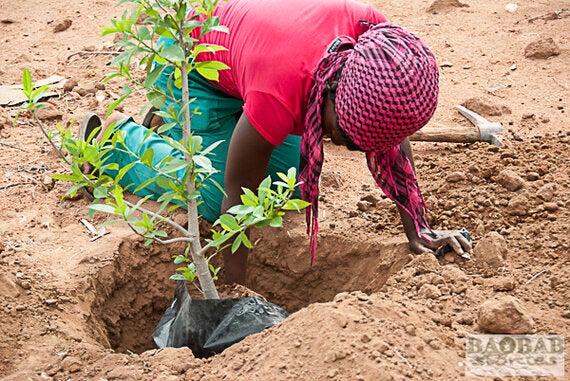
Baobab tree planting
Apart from raising and planting baobabs it focuses on environmental education and training. Venter pursues an integrated approach which will not only benefit the trees but takes the needs of the program participants into account, too. With the support of the participants she is convinced that the survival of the young baobabs is ensured.
The guardians of baobabs
Venter works with baobab fruit collectors, who are mainly women she is associated with through her company "EcoProducts". During workshops, women are introduced to basic knowledge of baobab ecology and protection. In addition, they learn how to grow seedlings from baobab seeds.
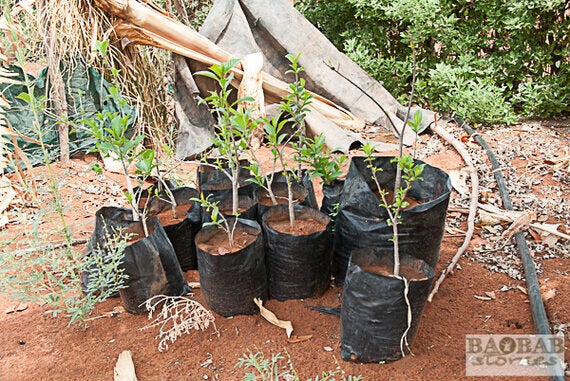
Baobabs, one year old
To make ownership of the trees and the program happen, the women are actively involved right from the beginning. They raise their own baobabs and decide where to plant them in their homesteads. The extra activities mean extra work for the women.
One has to bear in mind that most homes do not have running water. Since baobabs need to be watered regularly during their first years, extra water has to be carried in vessels. The little trees need to be planted close enough to the house that they can be adequately protected against browsing goats and cattle.
Women taking on responsibility and ownership for a small Baobab are called "Baobab Guardians". All of the newly planted trees are registered with their GPS coordinates. Once a year, Venter visits the homesteads and measures the growth of the trees.
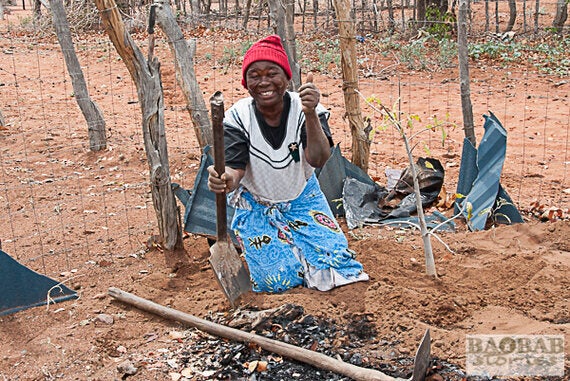
Baobab Guardian after planting her baobab
Financial incentives for care takers
To guarantee successful care for the seedlings and to provide an additional incentive for the baobab guardians, the foundation pays fees for every centimeter of successful growth.
For each seedling, the scientist budgeted a certain amount, so that she can reward the women. After three years, when the trees have grown about three meters in height, they are strong enough and their leaves are safe from browsing livestock. They then need neither protection nor special care and have outgrown the "guardians" program. The payments terminate and the trees survive on their own.
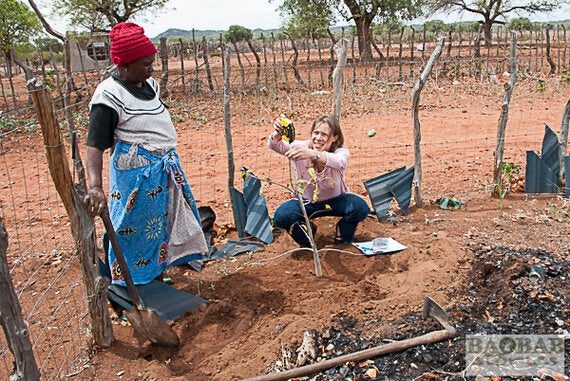
Measuring height of a baobab
A book for more publicity
By 2017, Venter plans to have 50 strong, healthy new baobabs in the project area. This is supposed to ensure additional fruit harvesting in future, increase in genetic diversity and that a new generation of young baobabs complements the currently older generations of trees in the area.
Venter found sponsors who help her to finance the initial stages of the program. The successful implementation is guaranteed for the first few years. Nevertheless, further financial support is highly welcome.
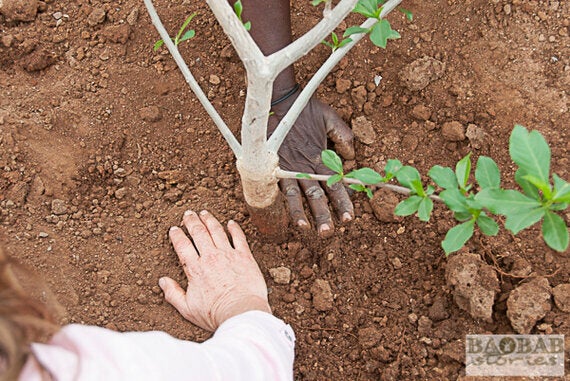
Baobab tree planting
In order to allow for more publicity for the Guardians Program and to inform people about the importance of baobabs for their specific environment and the local economy, the industrious ecologist is currently working on a book. It will be available at schools, libraries, tourist hot spots and at respective government agencies.
The special feature about the book: it will not only be published in English but in "TshiVenda", the local language in the Venda region. The reason for this being that many people in the former homeland do not speak English or Afrikaans.
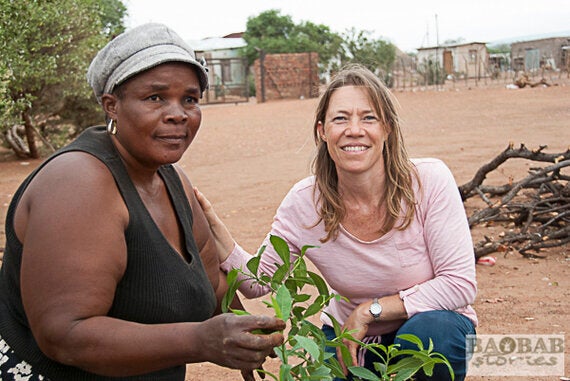
Dr. Sarah Venter (right) with Baobab Guardian
